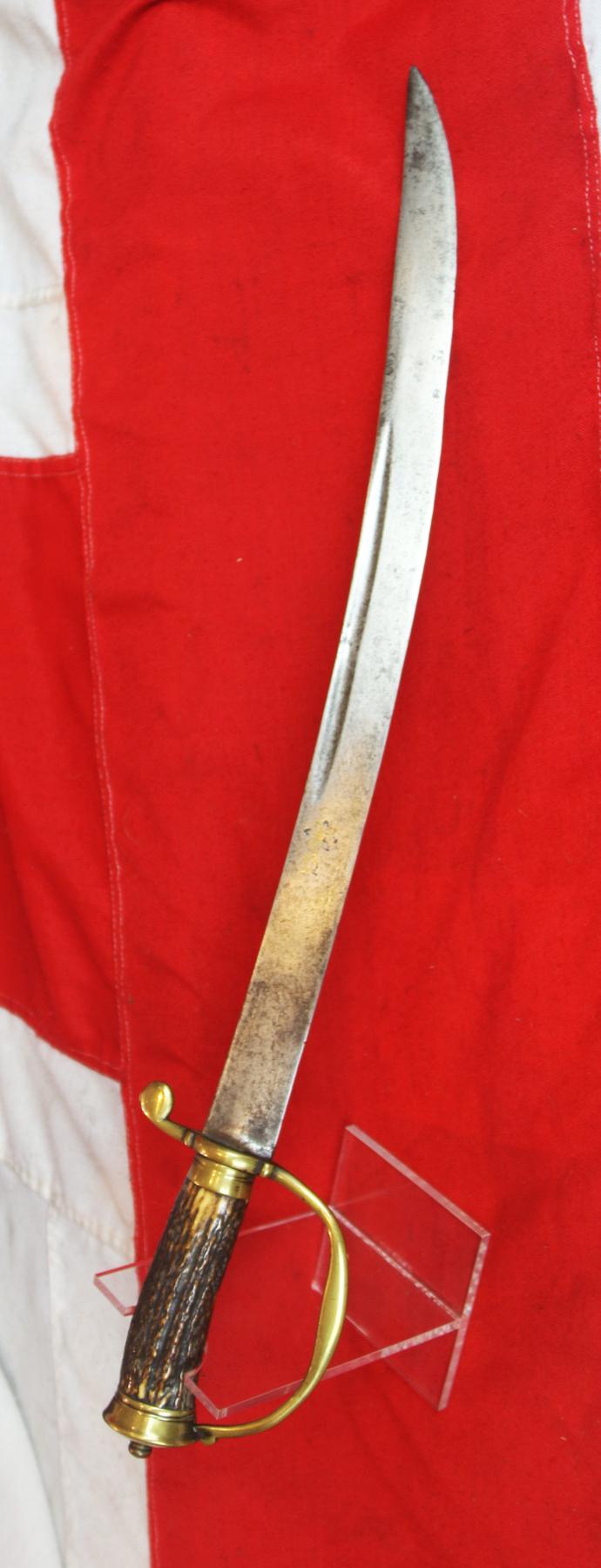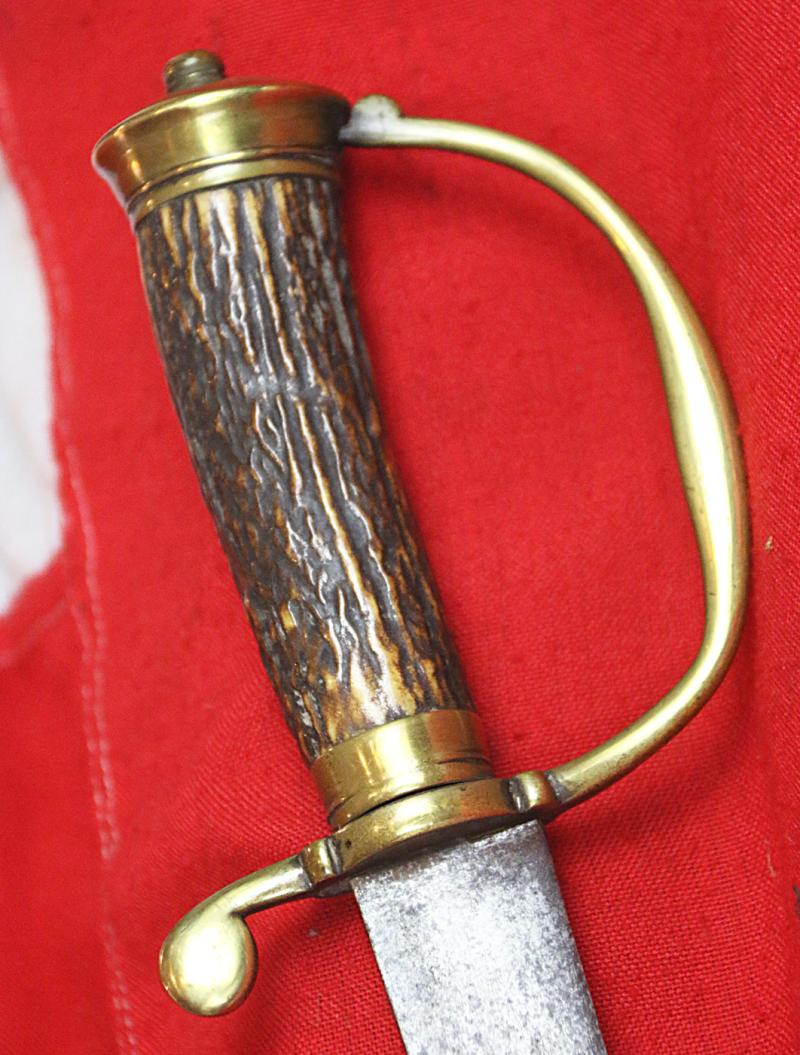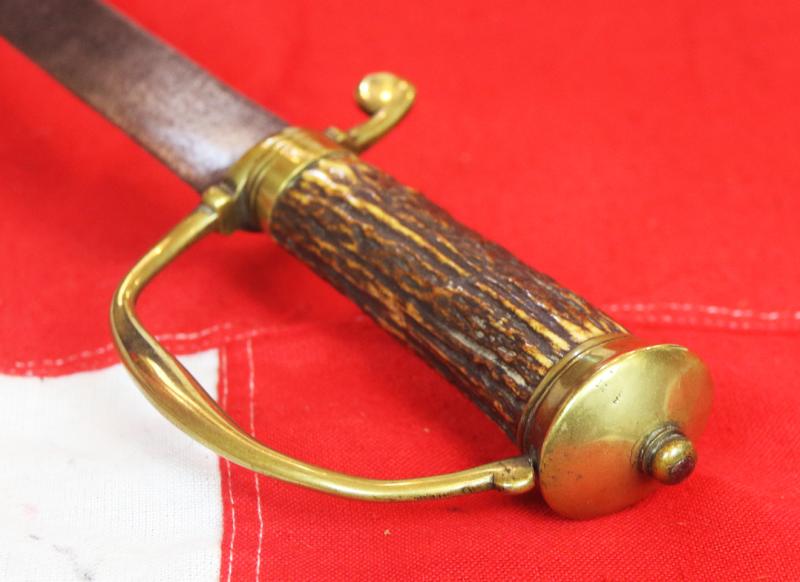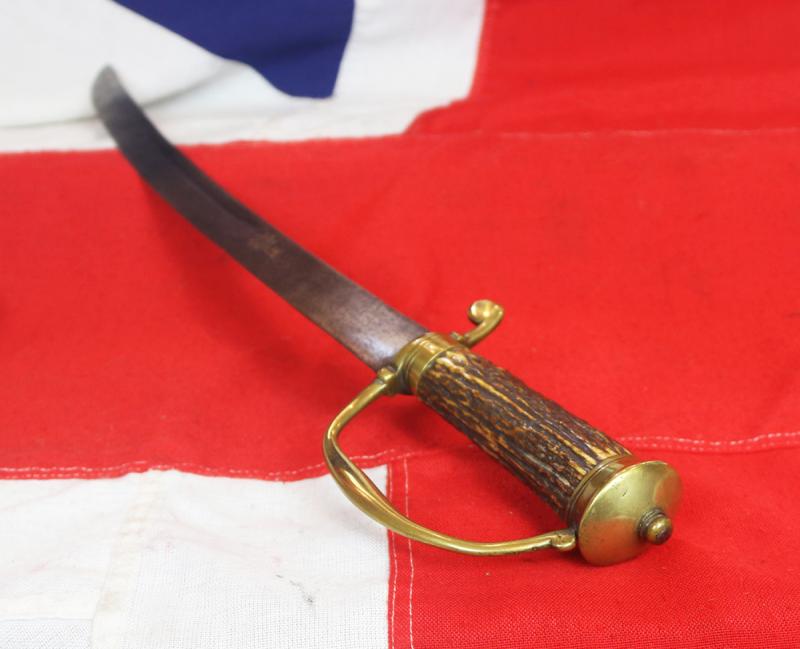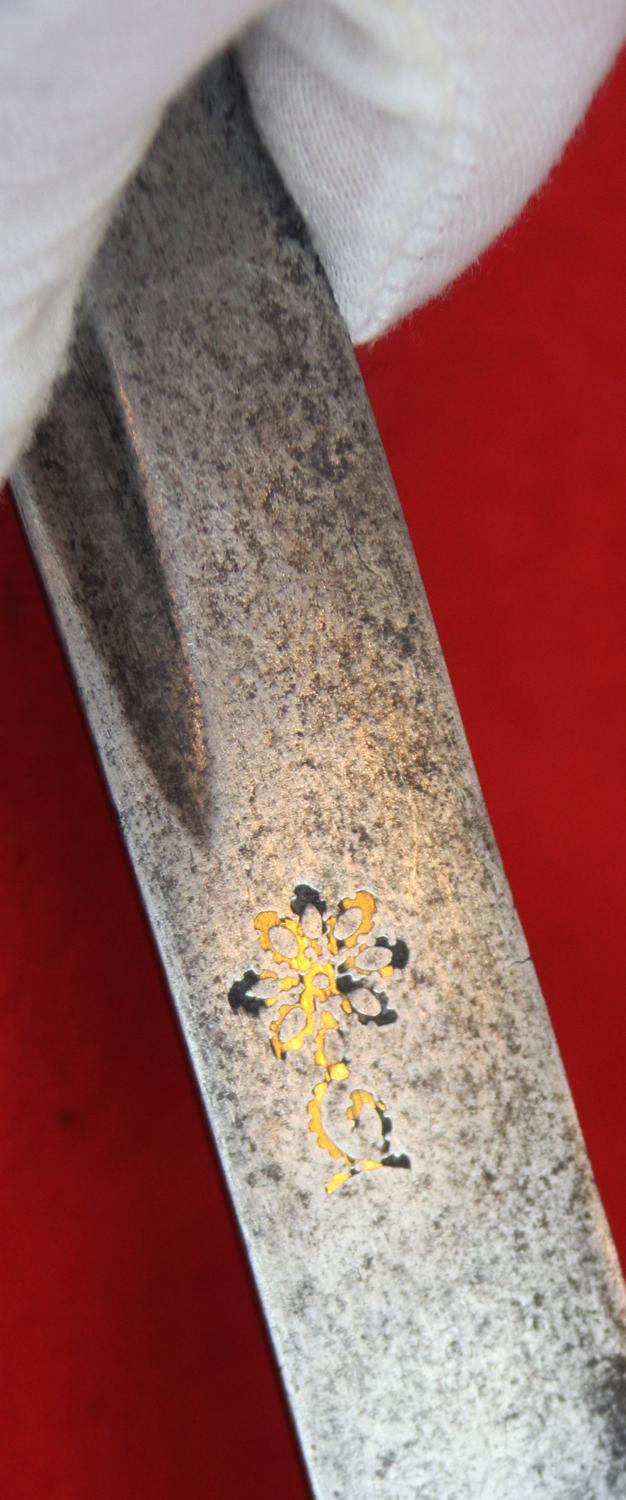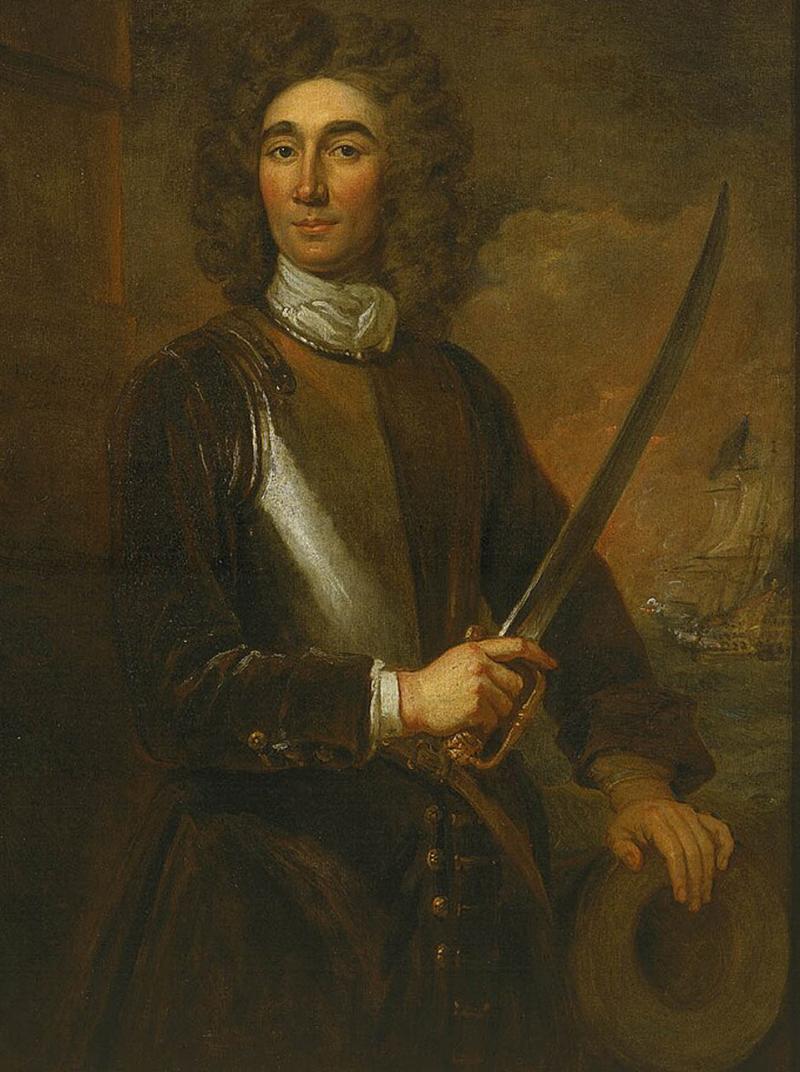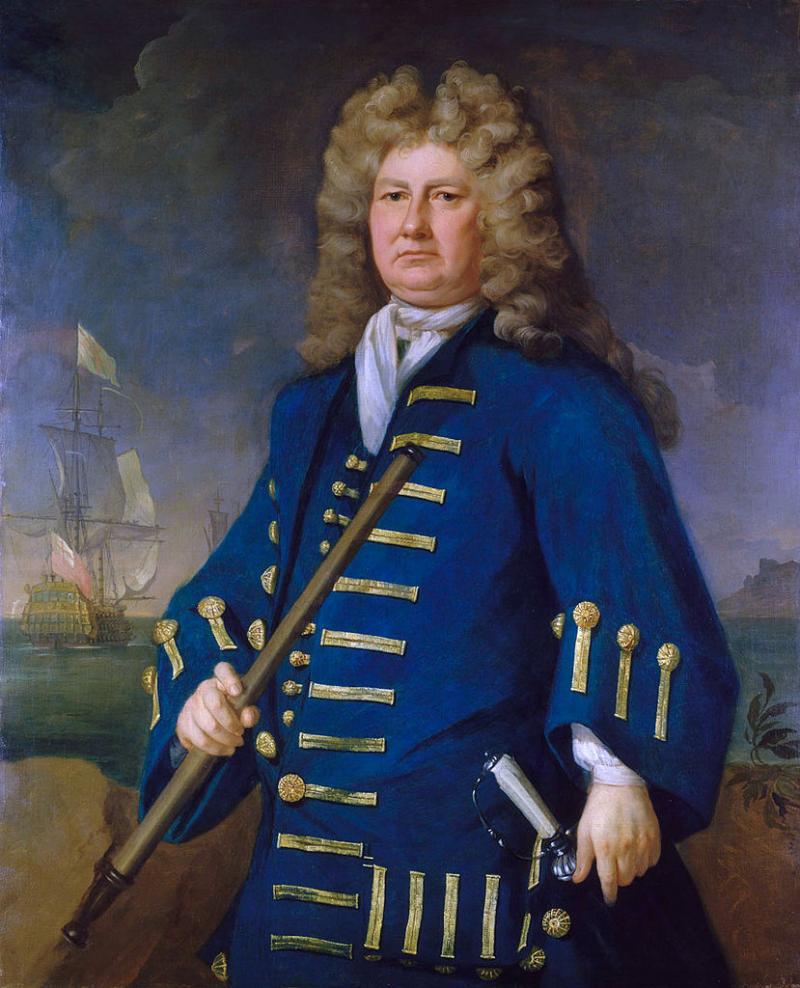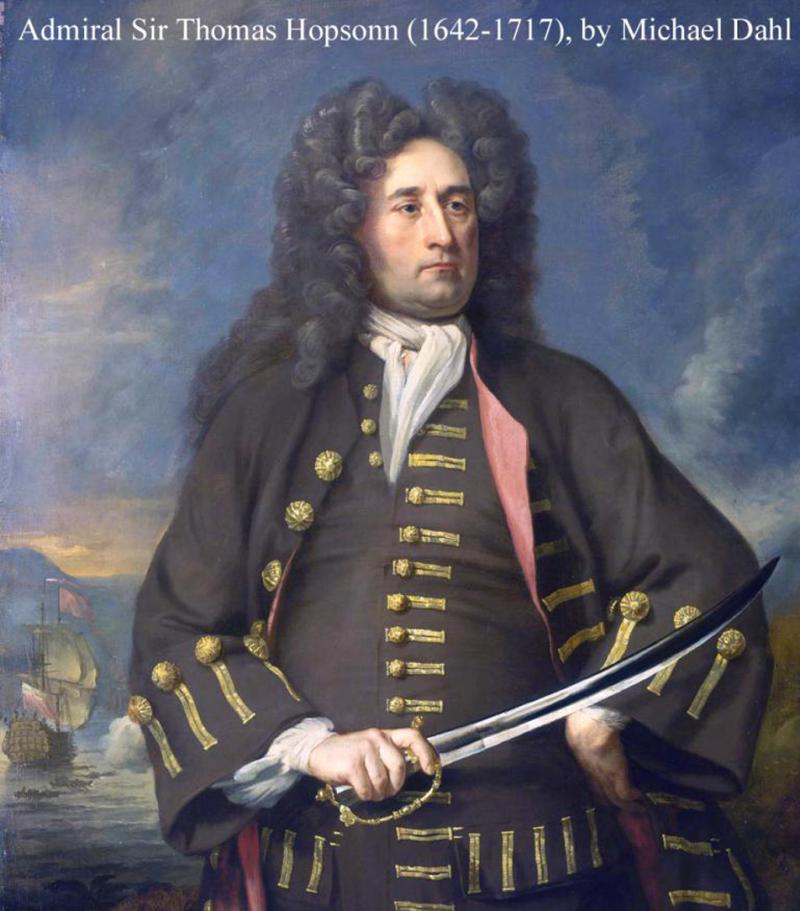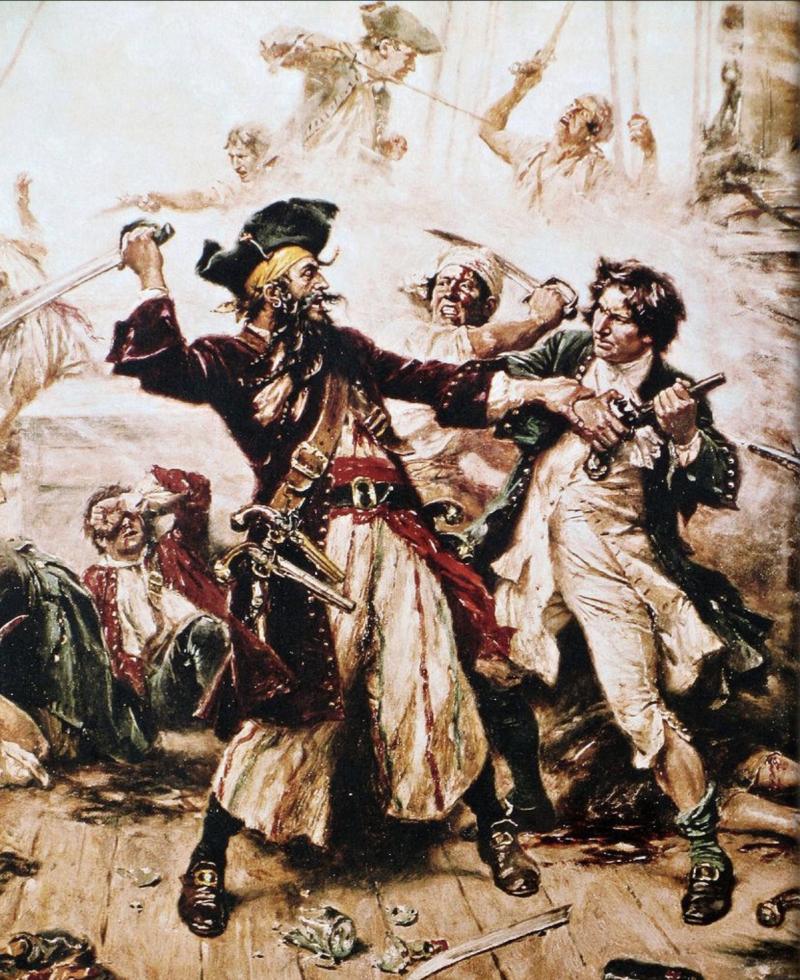A Very Fine, 17th Century, King 'William & Queen Mary' Period Hangar Sword Cutlass of Senior Naval Officer's Admirals and Captains of the Royal Navy. & Notorious Pirates 🏴☠️ Gold Inlaid Flower Head Stamped Blade
From a superb family collection we just acquired, that was accumulated over decades, of fine early swords, pistols and cutlasses.
The sword of choice for senior officer's {Admirals and Captain's} serving in the Royal Navy during the 17th and early 18th century. We show three portraits in the gallery of admirals of the age each bearing their same swords, plus notorious pirates Blackbeard using the same sword.
Short flat sided blade. Antler handle made of antler of a male deer, called “hartshorn,” brass single knuckle bow bar hilt with cap pommel.
Blade bears two armourer's marks, of an 8 petealed flower stem and leaf with gold inlay. Overall in superb condition for its age.
Another very similar 'William and Mary period cutlass hangar was recovered {in a very poor state} from the wreck of notorious pirate, Captain Blackbeard's ship, the Queen Anne's Revenge, that was found at Beaufort inlet in 1996, the remains of the vessel have become the property of the people of North Carolina. And another 'William and Mary' period sword-cutlass is in a museum collection in Colonial Williamsburg in America.
William and Mary were the co-regnants over the Kingdoms of England, Scotland, and Ireland, namely the Dutch Prince of Orange King William III (& II) and his spouse (and first cousin) Queen Mary II. Their joint reign began in February 1689 after they were offered the throne by the Convention Parliament irregularly summoned by William after his victorious invasion of England in November 1688, the so-called Glorious Revolution. They replaced James II (& VII), Mary's father, who fled the country. Parliament offered William and Mary a co-regency, at the couple's behest. After Mary died in 1694, William ruled alone until his death in 1702. William and Mary were childless and were ultimately succeeded by Mary's younger sister, Anne.
This was the most popular form of sword used by the early British Naval Commanders when at sea. There are numerous great portraits in the National Gallery, and at the National Maritime Museum, of 17th and 18th century Admirals adorned with identical swords. Such as Admirals Benbow, Shovel et al. we show three such portraits in our gallery, of Hopsonn, Shovel and Benbow.
Vice-Admiral John Benbow (10 March 1653 – 4 November 1702) was an English Royal Navy officer. He joined the Navy in 1678, seeing action against Barbary pirates before leaving to join the Merchant Navy in which Benbow served until the 1688 Glorious Revolution, whereupon he returned to the Royal Navy and was commissioned.
Benbow fought against the French Navy during the Nine Years' War, serving on and later commanding several English warships and taking part in the battles of Beachy Head and Barfleur and La Hogue in 1690 and 1692. He went on to achieve fame during his military accomplishments, which included fighting against Barbary pirates such as the Salé Rovers, besieging Saint-Malo and seeing action in the West Indies against the French during the War of the Spanish Succession.
Admiral of the Fleet Sir Cloudesley Shovell (c. November 1650 – 22 or 23 October 1707) was an English naval officer. As a junior officer he saw action at the Battle of Solebay and then at the Battle of Texel during the Third Anglo-Dutch War. As a captain he fought at the Battle of Bantry Bay during the Williamite War in Ireland.
As a flag officer Shovell commanded a division at the Battle of Barfleur during the Nine Years' War, and during the battle distinguished himself by being the first to break through the enemy's line. Along with Admiral Henry Killigrew and Admiral Ralph Delaval, Shovell was put in joint command of the fleet shortly afterwards.
During the War of the Spanish Succession, Shovell commanded a squadron which served under Admiral George Rooke at the capture of Gibraltar and the Battle of Málaga. Working in conjunction with a landing force under the Earl of Peterborough, his forces undertook the siege and capture of Barcelona. He was appointed commander-in-chief of the Navy while at Lisbon the following year. He also commanded the naval element of a combined attack on Toulon, base of the main French fleet, in coordination with the Austrian army under Prince Eugene of Savoy in the summer of 1707. Later that year, on the return voyage to England, Shovell and more than 1,400 others perished in a disastrous shipwreck off the Isles of Scilly.
Thomas Hopsonn enjoyed a naval command on 18 May 1688, when James II appointed him to the Bonaventure. This ship was part of the fleet sent to The Nore under Strickland to prevent the Dutch invasion. However, Hopsonn was one of the conspirators within the fleet who supported William of Orange in the Glorious Revolution.
Following the revolution, Hopsonn retained command of the Bonaventure and was part of the squadron that relieved the siege of Derry in June 1689. On 28 October 1689, he was posted to the York, and commanded that vessel during the battle of Beachy Head the following year. Hopsonn's immediate commander in the battle was Sir George Rooke, who formed a high opinion of his gallantry and was afterwards much associated with him. He commanded Royal Katherine for two months starting in August 1690, before moving to command the St Michael. It was aboard the latter that he followed Rooke in the battle of Barfleur on 19 May 1692. In the same year, he was promoted to become a captain in the foot guards on the recommendation of admiral Edward Russell.
Blackbeard or Edward Teach (c.1680-1718) is one of the most infamous pirates to have ever lived.
Known for his fearsome image and daring acts on land and sea throughout the West Indies and along the North American East coast, his legacy has been the inspiration for many depictions of pirates throughout history. In possibly his most brazen act, Teach used his flotilla to blockade the port of Charlestown in the province of South Carolina. Over the course of a week, nine vessels were stopped and plundered as they attempted to sail out of the harbour, where Teach's fleet was moored.
Teach informed some of his prisoners that his fleet required medical supplies from the colonial government of South Carolina and that if none were provided, all would be beheaded and their ships burned.
Two pirates and a prisoner were sent to the town but when they did not return he moved eight ships into the harbour, causing panic and looting within the town. Shortly after his supplies were delivered and the prisoners released, after reportedly being robbed of all worthy possessions.
This siege represents the height of Teach’s notoriety, not just as a skilled captain but a fierce leader who was not confined to the sea and would maraud where he pleased. Exploits such as these made Teach was one of the most commonly reported pirates in the news and in the print of his age.
22.75 inches long overall, 17.5 inch long blade
Code: 25381
895.00 GBP

